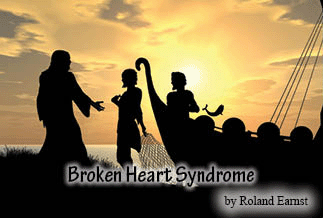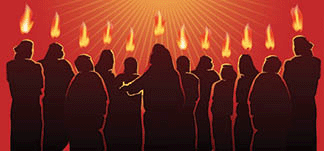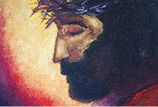Return to 3rd Quarter 2023 articles.

The medical name is takotsubo cardiomyopathy, but a more common name is “broken heart syndrome.” Extreme stress or emotions can cause it, such as losing a dear loved one. A “broken heart” can temporarily weaken your physical heart muscle. Research has shown a person has a 41% increase in the risk of dying in the first six months after losing a spouse.
Extreme emotional stress increases the release of the hormones cortisol, adrenaline, and norepinephrine while causing a reduction in the feel-good hormones of oxytocin, dopamine, and serotonin. The result can be broken heart syndrome with depression, poor sleep, fatigue, anxiety, high blood pressure, and physical pain.

I have often heard of broken heart syndrome used in connection with Jesus as he agonized in prayer before the crucifixion. After all, while Jesus was fully God, he was also fully man. He was “tempted in all things just as we are” (Hebrews 4:15). But what about the disciples? They had spent three years with him. He was their closest friend as well as their teacher/rabbi. They had begun to recognize that he was the Messiah who had come to restore God's kingdom. Imagine the shock they experienced when they saw him crucified like a common criminal. They must have considered the three years they spent with Jesus all for nothing, and their faith in God must have been shaken.
Broken heart syndrome literally changes the structure of your heart, even though we know that the physical organ is not the center of our emotions. So you could say that those disciples were brokenhearted emotionally and physically. They fled, and hid, and wept, and pondered. They were in despair.
However, in a few days, they became bold proclaimers of Christ. They had a new courage that they never had before. They were not afraid of the Roman authorities or the Jewish leaders. There is only one possible explanation for the change. They saw, heard, touched, and even ate with the resurrected Christ.

The disciples were in agony for two days, but on the third day, their broken hearts were restored to “brave hearts.” They never stopped proclaiming Christ's resurrection, even though their lives were tragically shortened because of their message. There is no way to explain their courage except that they knew first-hand that their message was true.

Picture credits:
© KimsCreativeHub. Image from BigStock.com
© Rudall30. Image from BigStock.com
© Flowart. Image from BigStock.com
© Nick Bakhur. Image from BigStock.com
Scripture links/references are from BibleGateway.com. Unhighlighted scriptures can be looked up at their website.
